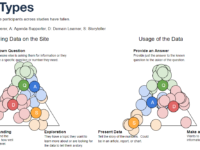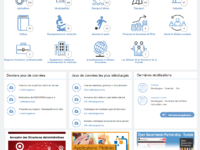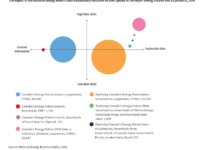The Autobús Legislativo: digital legislative files is a unique technological innovation in Mexico with the objective of making available to citizens all information related to a legislative bill and its drafting process in a single digital platform. In this way citizens are informed on the "route" and "itinerary" of legislation, from its conception until it is approved.
Innovation Tag Opengov: transparency
The Anti-Corruption Digital Marketplace (MDA) is the first space developed by a public institution in the history of Mexico, in which public institutions can share free and ready-to-use digital tools, in order to streamline and promote innovation and cooperation among those that need either software, or other digital resources to achieve common goals in addressing corruption. The MDA contains more than 22 tools, some of them have been developed by other national or local level public…
The Reducing Friction in Trade (RFIT) project was initiated in March 2019 as a proof of concept to establish how blockchain distributed ledger technology and associated technologies can be used to seamlessly integrate supply chain data with HM Revenue & Customs and the Food Standards Agency’s systems. The project intends to do so by guaranteeing the timeliness and provenance of critical data and avoiding the need for discrete declarations.
The National Open Data Portal is a single access point for all data produced by public institutions for the purpose of :
- Complying with the provisions of the organic Law on access to information in its section on the proactive publication of public data in open format;
- Promoting the reuse of public data to stimulate innovation and the creation of new value-added services aiming to enhance the economic growth; and
- Strengthening the transparency and integrity of governmental activities.
GovTech Poland has developed world's first challenge based procurement model where the authors of the best idea receive a full implementation contract without the need for an additional cumbersome tender. With the goal of opening procurement to all creative individuals, the model covers the process from identification to implementation. A pilot run, tested in both central and local institutions has increased SME participation in procurement processes by an average of 1600% (in a sample of 250)…
Minas Gerais Government Transparency Portal is an instrument of transparency and control of state governmental actions by its citizens. The data available on the portal allows citizens to inspect and monitor public expenses of the government, contributing to greater transparency and prevention of corruption. Since its creation, the portal has been improved and complies to regulations and standards of public information and has a user friendly interface.
Case Study
Monitoring of the Implementation of the Access to Information Act in the Federal Executive Branch
With the maturing of the Transparency Policy in the Brazilian Federal Executive Branch, there was a need to broaden the assessment of the implementation of the Access to Information Act. The innovation here lies in the methodology adopted, which was previously quantitative and is now also qualitative, allowing an improvement in the answers provided to citizens and the extension of the transparency culture, favoring all stakeholders: public bodies under assessment, citizens and the Government.
Citizen-centric Municipal Governance Scorecard is an innovation for improving local good governance. The main objective is furthering local good governance through transforming good governance principles into practical, measurable processes and actions. The model consisted of 227 indicators for the seven principles along decision-making, resource allocation, service delivery and institutional capacity stages. The data collection is geared for citizen use, based on digitally available…
Case Study
Redesigning the U.S. Natural Resources Revenue Data (NRRD) portal homepage to meet user needs

The Natural Resources Revenue Data (NRRD) portal provides open data to the public about revenue generated from extraction of natural resources on public lands and waters. Open data provides transparency into government operations, which gives the public information to back up claims made in the name of social justice. To make our data truly open and useful to the public, we’re going beyond our government mandates to open data and including our users in the design process as our site evolves.
In 2016 the NEB launched the Data Visualization Initiative to face the challenge of producing usable and useful data to go beyond using new technologies to deliver better service to citizens. It created multiple products from the same information to expand public participation in the energy dialogue and enable evidence-based decision-making. These products include interactive data visualizations and other materials, such as high school lesson plans, as a new way to engage experts and nonexperts.




